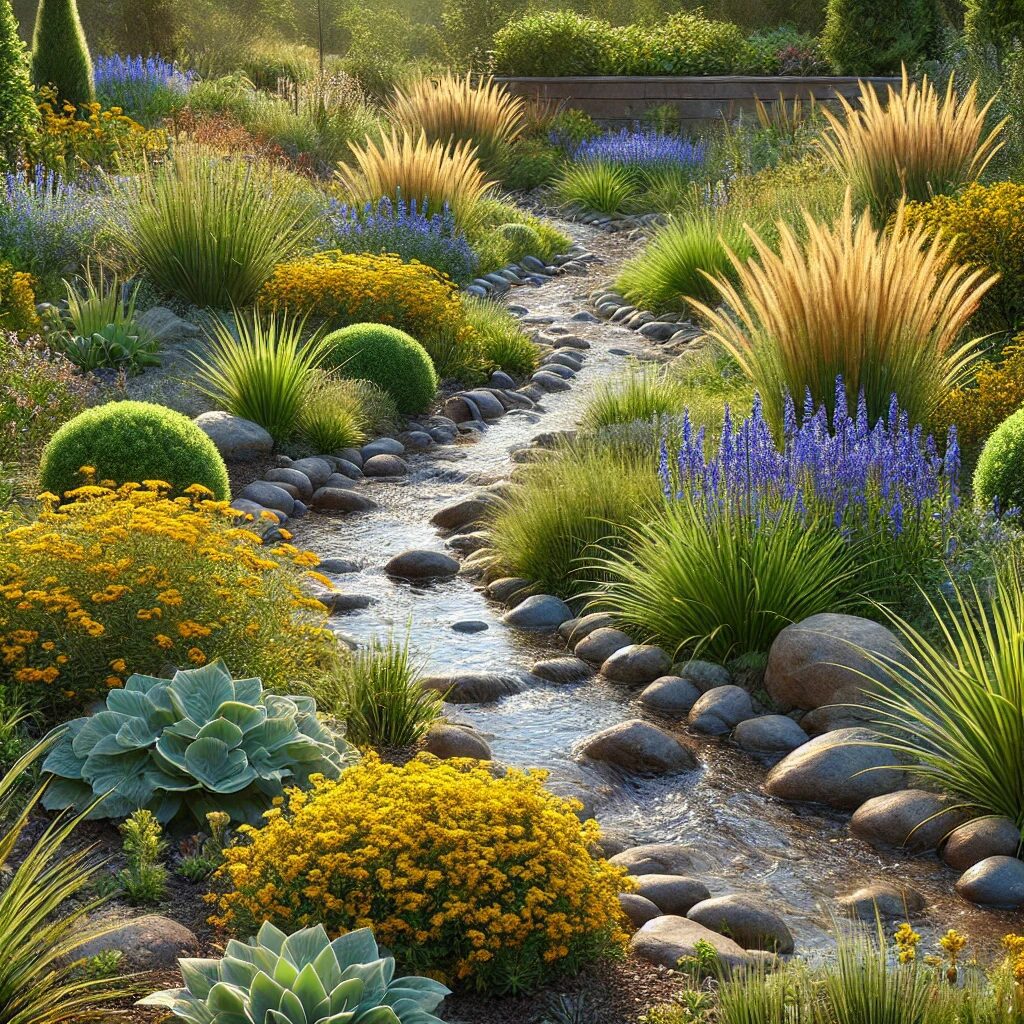Rain Garden Success: How to Manage Water Runoff and Beautify Your Landscape




Rain Garden Success: Manage Water Runoff with Native Plants
Introduction
The value of a rain garden in suburban landscapes is immense. These gardens offer many benefits, from improving water management to preventing erosion and enhancing your yard’s beauty. Rain gardens, designed to work with water rather than against it, recreate riparian environments and transform problem areas into lush, eco-friendly habitats. Beyond their aesthetic appeal, they serve vital functions like water filtration, soil building, and supporting local ecosystems.
Why Rain Gardens Are Essential
Rain gardens do more than manage water; they enhance the environment. By planting moisture-loving species, you can create vibrant microenvironments that attract diverse wildlife, from frogs and amphibians to native birds and insects. The plants used in rain gardens build healthy soil by holding it in place, releasing sugars for beneficial microbes, and filtering water before it returns to the watershed.
• Water Filtration: Native plants filter pollutants from rainwater.
• Erosion Control: Roots stabilize the soil and prevent erosion.
• Wildlife Habitat: A well-designed rain garden attracts pollinators, amphibians, and birds, creating a lively ecosystem.
Design Considerations for Your Rain Garden
1. Understanding Water Flow
The amount and source of water will determine the best design for your rain garden. Consider grading your landscape to direct water into the garden efficiently. Here’s how to optimize your setup:
• Deeper Depressions: Hold water longer and support moisture-loving plants.
• Wide Entrance Areas: Guide more water into the garden, reducing runoff.
2. Using Stone Elements for Functionality
Incorporating stones of various sizes enhances a rain garden’s beauty and function. Boulders and aggregates serve multiple purposes:
• Aesthetic Appeal: Boulder features provide year-round interest.
• Natural Weirs: Stones act as weirs to slow down water and reduce erosion.
• Debris Filtration: Use rip rap or cobble at water entrance points to catch debris and filter water.
For gardens with more robust water flow, select stone sizes that can handle the pressure and incorporate aggregates for water storage.
Choosing the Right Native Plants
The success of your rain garden depends on choosing the right plants for moisture and sunlight conditions. Here are some recommendations:
For Bioswales and Dry Creeks (Partial to Full Sun, Variable Moisture)

• St. John’s Wort (Hypericum perforatum): Thrives in partial sun and handles moderate moisture.
• Tussock Sedge (Carex stricta): Ideal for wetter spots.
• Blue Flag Iris (Iris versicolor): Perfect for water flow areas, adding vibrant color.
For Basins and Ponds (Medium Moisture to Standing Water)

• Soft Rush (Juncus effusus): Handles standing water and adds texture.
• Water Lilies (Nymphaea): Great for long-lasting water coverage.
• Swamp Milkweed (Asclepias incarnata): Attracts pollinators and flourishes in moist conditions.
Tip: Use a garden hose or wait for heavy rain to observe water flow and determine where to place different plant species.
Preventing Erosion and Stabilizing Soil
Erosion control is crucial, especially in the early stages of your rain garden. Before plant roots establish and stabilize the soil, use these methods:
• Light Soil Compaction: Tamp lightly every 2 inches for loose soils. For clay soils, tamp every 4 inches.
• Erosion Blankets: Use for areas with aggressive water flow or steep slopes.
• Mulch and Top Dressing: Apply straw, pine bark, or mulch where water flow is minimal to maintain soil structure.
Adding stone borders around the garden edges defines the design and helps maintain its shape and structure.
Conclusion
Rain gardens offer a robust, sustainable solution for managing water in suburban landscapes. By carefully selecting native plants, designing with water flow in mind, and incorporating natural elements like stones, you can create a thriving ecosystem that supports wildlife and improves water quality. And the best part? A well-designed rain garden is surprisingly low-maintenance, making it a versatile and beautiful addition to your property.
Ready to transform your yard? Belfield Botanica is here to help. Contact us to learn how we can design and install a rain garden that enhances your landscape and benefits the environment.
